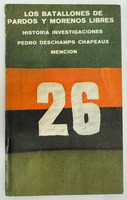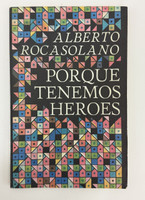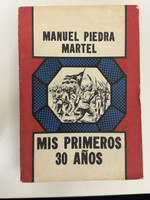- Travel
-
Exhibits
- La Portada Cubana
- Immortal Cuba: Artists Take on Their Heroes
- Seattle Poster Exhibit
- Sandra Dooley & Alejandrina Cué
- The Art of Wayacón
- Cuban Folk Art
- Cuba In Black And White
- 25 Years of Cuban Art Space
- Summer Folk Art Expo
- ¡SPRING AWAKENING FROM CUBA!
- Celebrating The Art Of Cuban Women
- Celebrating Paper, Affordable Art from Cuba
- Art of the Revolution
- Outsider Art
- Lost and Found
- En la lucha: Celebrating Cuban Women and Their Art
- Cuban Art Stash
- 100 Fires: 5 Cienfuegos Artists' Work on Paper
- Waya + Monte! Magic Realism in Cienfuegos
- Viva Cuba Viva! Poster Show
- Cultivando Sueños
- Black Lives Matter in Cuba Jan 9-March 27
- Leandro Soto: Crónicas visuales
- Cuban Canvas
-
Archive
- Global Reflection 2018: Spirit and Community
- Exhibit in the cloud: Contemporary Works on Paper
- MADE IN CUBA! MINNEAPOLIS EXHIBIT
- Cuban Posters and Photography from CCS collection
- AUTUMN SALE! Sept/Oct 2017
- SPRING ARTS AND CRAFT SALE
- Vuelo Directo/Non Stop: Alberto & Alejandro Lescay
- The Many Faces of Fidel
- Somos
- Made in Cuba!
- The US empire in Cuban graphics
- Made in Cuba/Seattle exhibit
- Entre Nos
- Looking Back
- Cuban Art Space
- Membership/Donate
- About Us
- Cuba News
-
The cover of "Vía Crucis" features Cecilia Guerra's powerful design depicting silhouetted revolutionary figures with raised arms and weapons in bold blue against a vibrant red circular field containing Cuba's white star, all framed against a rich purple background. The composition transforms the traditional Christian "Way of the Cross" into a symbol of Cuban independence struggle, with the decorative oval cartouches containing the title and author's name evoking both colonial baroque ornamentation and revolutionary graphic design. The contrast between the dynamic revolutionary imagery and the elegant typographic treatment creates a sophisticated visual tension that reflects the book's themes of sacrifice, struggle, and ultimate triumph. This design approach exemplifies the revolutionary government's efforts to reclaim and recontextualize Cuba's independence history within socialist ideology.
Published as part of Editorial Letras Cubanas' prestigious "Biblioteca Básica de Literatura Cubana" series, this 1979 edition makes Bacardí's important historical work accessible to post-revolutionary readers. The "Vía Crucis" chronicles the suffering and sacrifice of Cuban independence fighters, drawing explicit parallels between Christ's passion and the martyrdom of Cuban patriots. Written by one of Cuba's most prominent independence activists, the work provides firsthand testimony to the brutal realities of colonial oppression and the moral imperative of revolutionary resistance. The book includes "Vía Crucis (impresiones de un lector)," "Páginas de Ayer" (divided into two parts), "Magdalena," and a chronology, offering both personal reflection and historical documentation.
Emilio Bacardí Moreau (1844-1922) was a Cuban independence activist, writer, archaeologist, and member of the prominent Bacardí rum family. Born in Santiago de Cuba, he was repeatedly imprisoned and exiled by Spanish authorities for his revolutionary activities. Beyond his political involvement, Bacardí served as mayor of Santiago de Cuba after independence and founded Cuba's first museum. His literary works, including "Vía Crucis," draw from his direct experience in the independence movement, providing crucial testimony about the psychological and spiritual dimensions of anti-colonial struggle. The 1979 edition, edited by Eliana Dávila with a prologue by Cira Romero, was printed in February 1979 at Establecimiento No. 8 "Mario Reguera Gómez" in Havana, ensuring this foundational text of Cuban patriotic literature remained available to revolutionary Cuba's readers.
-
-
Discover More at the Center for Cuban Studies







